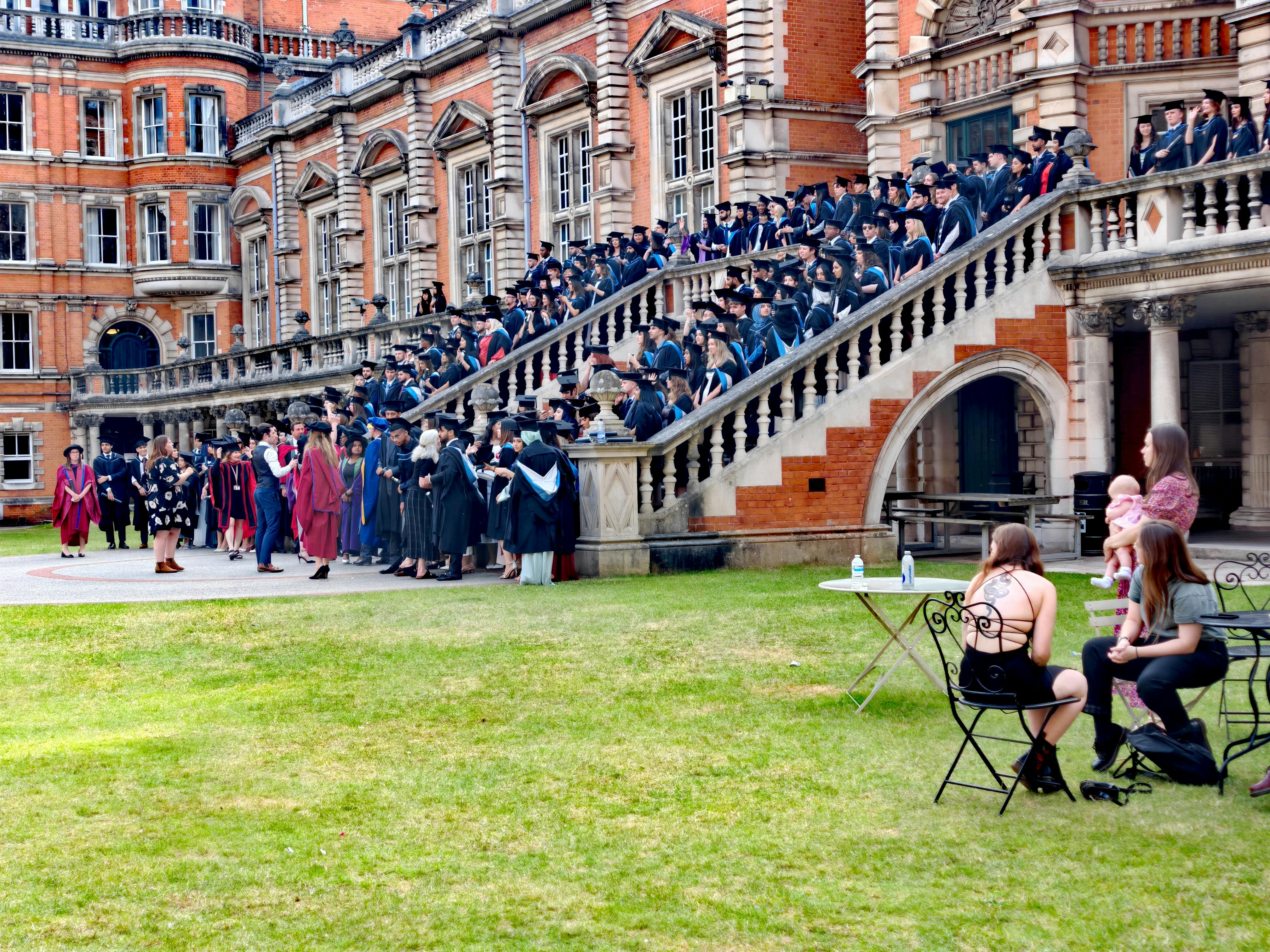How to Get Your Master’s in Europe: Step-by-Step Guide 2025
Ever wondered how to get your master’s in Europe, but feel swamped by visa talk, funding headaches, or confusing university websites that seem to switch from English to German to, wait, is that Dutch? Trust me: you’re not alone. I remember my early-2010s inbox, crammed with frantic messages from students and friends (“Wait, does Bologna mean actual Italy or some treaty thing?”). Honestly, deciding to pursue a master’s degree abroad is a genuinely life-altering move—but it’s also one that loads of ambitious people are considering for 2025 and beyond. The hard truth? There is no “simple” answer, but there’s a roadmap… and, if we’re candid, more than a few potholes I wish someone had warned me about before I stumbled into them the first time.
Over the past 15 years, I’ve advised international applicants, worked closely with European university admissions teams, and frankly, made nearly every mistake in the book myself—from missing a key application deadline back in 2014 to misunderstanding how funding operates in Scandinavia. But these experiences have taught me a thing or two about the process: what works, what doesn’t, and why getting a master’s degree in Europe—done right—opens up transformative career and life opportunities you might not even imagine yet. Still, many would-be students underestimate just how nuanced (and, occasionally, bureaucratic) the process truly is.1
In this comprehensive, up-to-date, and—above all—honest guide, you’ll find everything you need: how to choose your ideal country and university, practical timelines, application dos and don’ts, funding secrets, proven tips for surviving culture shock, and current updates for 2025 (including Brexit aftermath and post-pandemic mobility rules). Whether you’re just dreaming or nearly ready to hit submit, I’ll show you what really happens in practice. And yes, I’ll call out the myths and “fairy tale” stories that sound lovely but fall apart in real life.
Why Europe: The Big Draw
So why do more than half a million international students—from the Americas, Africa, Asia-Pacific, and even other parts of Europe—flock to European universities each year?2 Several reasons leap out, but let’s keep this grounded: cost, academic variety, employability, and, yes, the sheer fun of living somewhere new. It’s not just Paris or Berlin; smaller cities (think Ghent, Bologna, or Lund) can deliver just as much—if not more—bang for your buck. Plus, Europe offers pathways for nearly every subject imaginable, from data science and AI to art restoration and renewable energy. Cliché as it sounds, it really is a choose-your-adventure scenario.
- Tuition can be free or heavily subsidized for non-EU/EEA students—see Germany, Norway, Austria.3
- Low barrier to entry for English-taught programmes: The Netherlands, Sweden, and Denmark boast hundreds of options in English.4
- Visa pathways often allow post-study work for 1–2 years in most countries.5
- You’re close to dozens of other countries—weekend trip to Prague or Barcelona, anyone?
Top Countries & University Systems: What’s Changed for 2025?
All right, big picture: Not all master’s degrees are created equal, and more crucially, neither are the experiences. Back in 2015, you could apply to six “Erasmus Mundus” master’s programs with mostly the same English-language documents (felt shockingly easy). By 2025, requirements vary even inside countries: Italian universities may ask for translated diplomas with Hague Apostilles; Finnish tech schools might want a coding sample and algorithm breakdown. The process now is way more personalized than it once was—and if you’re navigating both local systems and Brexit’s side effects, the difference between, say, Dublin and Paris is… not small.
| Country | Typical Tuition (Intl.) | Language | Notable Advantages |
|---|---|---|---|
| Germany | €0–€1,500/yr | German/English | Lots of free programs, top engineering degrees |
| Netherlands | €8,000–€18,000/yr | English/Dutch | Ultra-modern facilities, high English fluency |
| France | €3,770–€30,000/yr | French/English | Prestige schools, strong in business, art, political science |
| Italy | €3,000–€15,000/yr | Italian/English | Ancient universities, top in architecture/design |
| Sweden/Finland | €8,000–€18,000/yr | English/Swedish/Finnish | World’s best student services, sustainability focus |
| Ireland | €9,000–€20,000/yr | English | Tech jobs pipeline, English-speaking |
Next up: the actual application process. Spoiler alert: It’s not only about grades.
How the Application Process Really Works (And What They Don’t Tell You)
Take it from me: the “easy apply” story is a myth (unless you’re a stealth superhero at paperwork). Sure, European master’s applications look streamlined—often 100% online, no standardized GRE/GMAT in most countries. But here’s where students get tripped up, year after year: each country, and usually every university, has its quirks, hidden extra docs, fees, or credential rules that can catch even seasoned international applicants off guard.7
- Check deadlines a year ahead (no joke). German “winter semester” applications often close in March or May for a September start.8
- Transcripts: Sometimes stamped originals, sometimes online digital copies, and sometimes they want both plus notarized translations. Fun, right?
- Letters of recommendation: Many require academic references, but some Dutch and Scandinavian programs ask for professional/employer letters instead.
- Proof of English (or German/French/Italian) proficiency—TOEFL, IELTS, or C1/C2 certificates are golden, but rules might change by program.9
Step-by-Step Master’s Application Timeline (2025)
- 12–15 months out: Shortlist target universities and check all requirements. Note: some countries (e.g., Denmark, Sweden) require you to apply through a national portal—not individual universities.10
- 9–12 months out: Begin standardized English or other language testing, if needed. Start crafting statements of purpose—these matter hugely in competitive fields.
- 6–9 months out: Request transcripts and references, polish your application, and assemble specialized materials if your field requires them (e.g., coding sample for STEM, portfolio for arts/design, research proposal for sciences).
- 3–6 months out: Submit all applications. Some programs fill fast—rolling or early deadlines mean waiting too long can leave you shut out.
The above is “ideal world.” But life isn’t always ideal—trust me, I’ve seen applicants (myself included) scramble last-minute for a surprise document, or pull off an application blitz in three weeks flat due to a late-discovered program. It’s doable, but stressful. Do as I say, not as I once did!
“The only part harder than applying was waiting for a response. Some schools replied in two weeks, others in four months, and I was sure I’d messed up every milestone in between.”
Finding Funding & Scholarships: Beyond the Obvious
The idea that “European master’s are cheap” is mostly—but not always—true. If you’re aiming for Western European countries (France, UK, Netherlands), tuition can be intense. Scholarships help, but knowing where to look is half the battle.
| Scholarship/Grant Program | Countries Available | Eligibility | Typical Value |
|---|---|---|---|
| Erasmus Mundus Joint Masters | EU-wide (multi-country) | Global applicants, high academic merit | Full tuition + stipend |
| DAAD Scholarships | Germany | Non-EU, all disciplines | €850/mo living + tuition fee waiver |
| SCIENCE@LEUVEN Grant | Belgium | Science programs, non-EU preferred | €10,000/year |
| Swedish Institute Scholarships (SISGP) | Sweden | Emerging markets focus | Living + tuition, up to €15,000/yr |
Practical Funding Steps
- Research country-specific and course-specific grants at least a year in advance.
- Prioritize full scholarships, but apply to all, even “partial”—a partial fee waiver goes a long way when paired with a research assistantship or local job.
- Budget for hidden costs: visa fees, student union membership, required health insurance, accommodation deposits.
“I combined two partial university grants and worked part-time as a student guide—ended up graduating nearly debt-free, even in Amsterdam.”
One caveat: Not all non-EU students are eligible for the same grants, and even within the EU, Brexit has created new obstacles (e.g., fewer Erasmus places for UK passport holders). Always check the year’s latest terms.
Beating Language Barriers: Do You Really Need Another Tongue?
You’d think English is always enough. In part, that’s true: the number of English-taught master’s programs in mainland Europe exploded from just 560 in 2007 to over 8,000 in 2024.13 However, for social integration—and affordability—learning some of the local language is a game-changer. Plus, it can open up more course options, possible scholarships, and crucially, post-grad jobs.
I’ve seen plenty of students skip language classes, only to run into roadblocks with government bureaucracy or internships. Balance is the key: for your degree, English might suffice, but for the rest of life, trust me, learning the basics nets real advantages.14

Student Visas and Residence Permits: Your Passport to the Master’s Adventure
Let’s tackle student visas. For non-EU/EEA nationals, this step can be a notorious bottleneck. Personally, I’ve worked with applicants who breezed through in three weeks—and others stuck in limbo for months after incomplete paperwork. EU students? Much easier; no visa required in most Schengen countries (save for registration of residence upon arrival).
- Acceptance Letter: You can’t start your visa until you have a formal offer—even provisional is usually fine.
- Proof of Funds: Each country sets a minimum annual sum you must show. For Germany in 2025, expect €11,208. For France, about €7,850.15
- Health Insurance: Absolutely essential. Many consulates ask for evidence (buy before you travel) and your university will require enrollment for the duration of your studies.
- Biometrics and Interviews: Increasingly common, especially post-pandemic. EU digital entry-exit systems are rolling out by late 2025.16
“I missed my embassy appointment by two days because their website broke. Had to rebook a month later—but the university saved my spot. Bureaucracy is stressful, but staff are often flexible if you communicate.”
Student Life: What No Brochure Tells You
Real talk: European student life isn’t all museum hopping and Instagram brunches. Fun as those are, the actual experience tugs between moments of awe (midnight Vienna concert, fresh-baked Parisian croissant…there’s a reason people fall in love with these places) and genuine frustration (gray Januarys, paperwork, and the “how-do-I-make-friends?” panic).
- Housing is, without exception, the #1 hassle. Apply early for student residences—private market rents can be astronomical, especially in Amsterdam, London, or Paris. Consider starting with a university “buddy” program or Facebook group for leads.
- Cultural transitions are real. Expect some “reverse shock” if/when you visit home after a semester abroad—values, habits, and relationships change.18
- Campus support is robust… once you ask. Mental health counseling, study skills workshops, visa renewal drop-ins—almost all are free if you know who to ask. But you have to seek them out.
- Travel is insanely accessible, but beware: academic calendars vary (short Swedish summers, November block courses in Italy, endless “reading weeks” in the UK or the Irish system).
Another thing nobody tells you: Europeans socialize differently. Friends from “back home” may check in daily, but here, relationships often develop slowly, rooted in shared activities (clubs, sports, debate societies). Don’t expect instant “friend groups”—but, given time, they’re often deeper and more lasting.
“Orientation week intimidated me so much, I nearly skipped it. But joining the environmental club changed everything—I met friends from six countries and found paid research work.”
Careers and Staying in Europe: Your Next Chapter
Now for the million-Euro question: will a European master’s jump-start your career? In a word, usually (but not always!). For 2025 and beyond, EU member states and many non-EU countries are actively restructuring post-study work rights as a core recruitment tool. Germany and Ireland now explicitly allow up to 18–24 months post-graduation for international job-hunting—an enormous improvement over the one-year limits of the past.20
- STEM and tech fields = unmatched opportunities (especially Germany, Netherlands, Ireland, Finland, and Estonia).
- Liberal arts, business, and social sciences? Solid options if you build in internships, language upskilling, and local networking.
- Health, law, and regulated professions: Extra verification likely required—sometimes even a second “local” certification.21
In the early 2020s, and ever since—this part sticks with me—global employers like Siemens, Philips, and BNP Paribas now routinely filter resumes for European credentials. Yet, navigating the job market mid-pandemic, several of my close friends saw roles change overnight, so be prepared for adaptability as the new reality.22
“My London finance master’s doubled my job prospects, but I got my actual job in Berlin—thanks to a side project highlighted by a Dutch recruiter I wouldn’t have met otherwise.”
European Master’s Student FAQs (2025 Edition)
- Q: Can I apply to more than one country or university at a time?
A: Absolutely—most applicants do! Just watch out for overlapping deadlines, and remember: some centralized portals (like Sweden’s universityadmissions.se or France’s Parcoursup) require separate processes. Balancing applications across systems takes careful management. - Q: How important are extracurriculars and work experience?
A: Increasingly crucial, especially for competitive fields like international business, data science, or policy. Show leadership, initiative, or unique perspectives in your application—even if it’s outside your immediate academic specialty. - Q: Can I work while studying?
A: Usually yes, but with restrictions: most EU countries let international students work 20 hours/week during term; some, like Germany and France, have generous work permits for students. But your main priority is study—falling behind can jeopardize your visa. - Q: What if I don’t speak the local language?
A: Pick an English-taught program (thousands available!), but definitely learn basics for daily life. Many universities offer free language courses for enrolled students. - Q: Are European master’s recognized globally?
A: Yes—for the vast majority of research universities and most professional fields. However, for regulated careers (medicine, law, architecture), check professional accreditation.
Schema Markup and 2025 SEO Essentials
For advanced users and digital pros: European universities now leverage schema.org markup (applicationProcess, EducationalOccupationalCredential, courseInstance) to improve program search visibility. When you share your journey or student story, consider how proper tagging helps future applicants find real voices and avoid spammy directories.
Final Thoughts & Real Takeaways
After 15+ years in this field, what strikes me most is not just the number of opportunities in Europe, but the diversity: urban vs. rural, ancient vs. cutting-edge, continental vs. Nordic, small departments vs. massive global campuses. International education has never been more open to motivated students—if you know where (and how) to look. Sure, there are challenges (as you’ve seen, plenty!), but every year, thousands finish their European master’s with expanded horizons, new skills, and lasting global ties.
On a final, a bit personal note: Some of my closest friendships and most significant career breakthroughs happened through serendipitous class projects, chance campus conversations, or even, in one wild case, a midnight train from Vienna. The real value of a European master’s is not only the credential, but the community, networks, and impossible-to-predict adventures you’ll encounter. That’s why, despite the paperwork and the waiting, I keep recommending this path.
References


